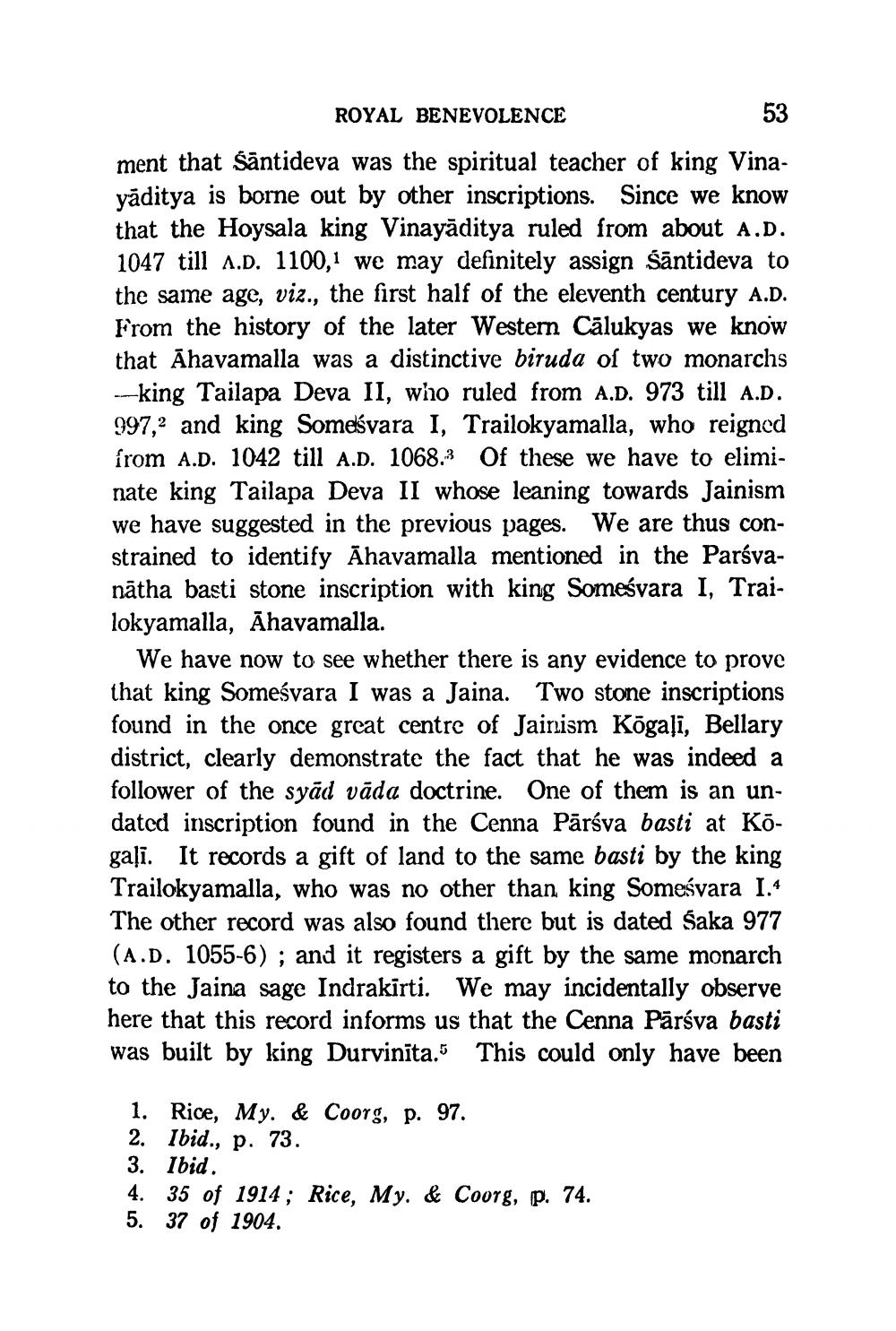________________
53
ROYAL BENEVOLENCE ment that sāntideva was the spiritual teacher of king Vinayāditya is borne out by other inscriptions. Since we know that the Hoysala king Vinayāditya ruled from about A.D. 1047 till A.D. 1100,1 we may definitely assign śāntideva to the same age, viz., the first half of the eleventh century A.D. From the history of the later Western Cālukyas we know that Ahavamalla was a distinctive biruda of two monarchs ---king Tailapa Deva II, who ruled from A.D. 973 till A.D. 997,2 and king Someśvara I, Trailokyamalla, who reigned from A.D. 1042 till A.D. 1068.3 Of these we have to eliminate king Tailapa Deva II whose leaning towards Jainism we have suggested in the previous pages. We are thus constrained to identify Āhavamalla mentioned in the Parśvanātha basti stone inscription with king Someśvara I, Trailokyamalla, Āhavamalla.
We have now to see whether there is any evidence to prove that king Someśvara I was a Jaina. Two stone inscriptions found in the once great centre of Jainism Kögaļi, Bellary district, clearly demonstrate the fact that he was indeed a follower of the syād vāda doctrine. One of them is an undated inscription found in the Cenna Pārśva basti at Kogaļī. It records a gift of land to the same basti by the king Trailokyamalla, who was no other than king Someśvara 1.4 The other record was also found there but is dated Saka 977 (A.D. 1055-6); and it registers a gift by the same monarch to the Jaina sage Indrakirti. We may incidentally observe here that this record informs us that the Cenna Pārsva basti was built by king Durvinīta. This could only have been
1. Rice, My. & Coorg, p. 97. 2. Ibid., p. 73. 3. Ibid. 4. 35 of 1914; Rice, My. & Courg, p. 74. 5. 37 of 1904.




